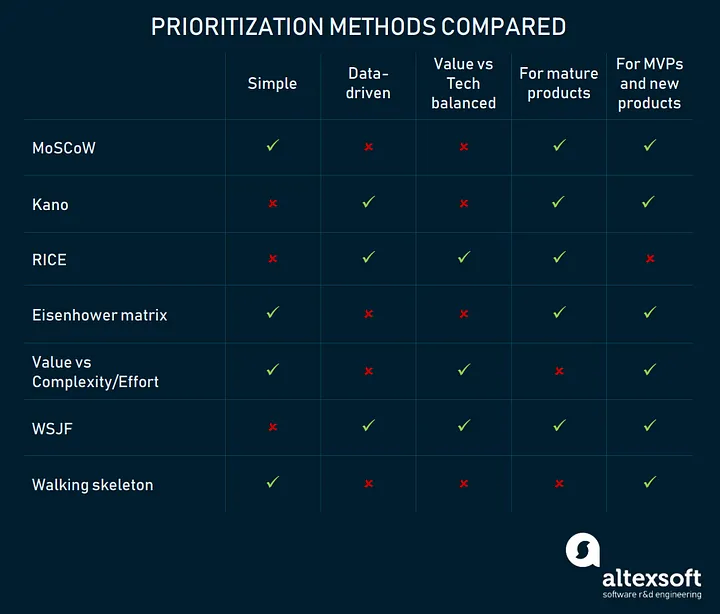RICE and Related Prioritization Methods
The RICE model enables Product Managers to assess competing ideas, scoring them in different dimensions and deriving a prioritization based on that. The key elements are:
- Reach in the sense of how many customers are affected or new prospects will be won, just the plain number can be given here.
- Impact is an assessment of how important a new feature is, so for example to what degree it will help win new customers or improve customer satisfaction. For the formula below, the impact can be expressed on a scale from 0.25 (minimal) to 3 (massive).
- Confidence comes in to take uncertainty into account such that projects that are too risky are down-scoped. Confidence can be expressed on a percentage scale with 100% being absolutely sure.
- Effort is an estimation of the resources required to build a feature, so most often person months.
With that data points, the RICE score can be computed according to the following formula:
RICE = Reach * Impact * Confidence / Effort
The key idea is that higher-scoring features shall be prioritized because they promise a bigger bang for the buck.
While useful to know, we recommend to handle with care for several reasons:
- Both, impact as well as effort, are typically unknown or estimated at best.
- Estimations of efforts, or sizing, are typically not comparable across teams.
Consequently, applying the simple formula suggest a pseudo-accurate assessment given the raw input data.
What’s more. according to our experience, RICE and related methods typically favor the low-hanging fruit while postponing moonshot projects.
Further Reading

The Most Popular Prioritization Techniques and Methods
MoSCoW, RICE, KANO model, Walking Skeleton, and others.
